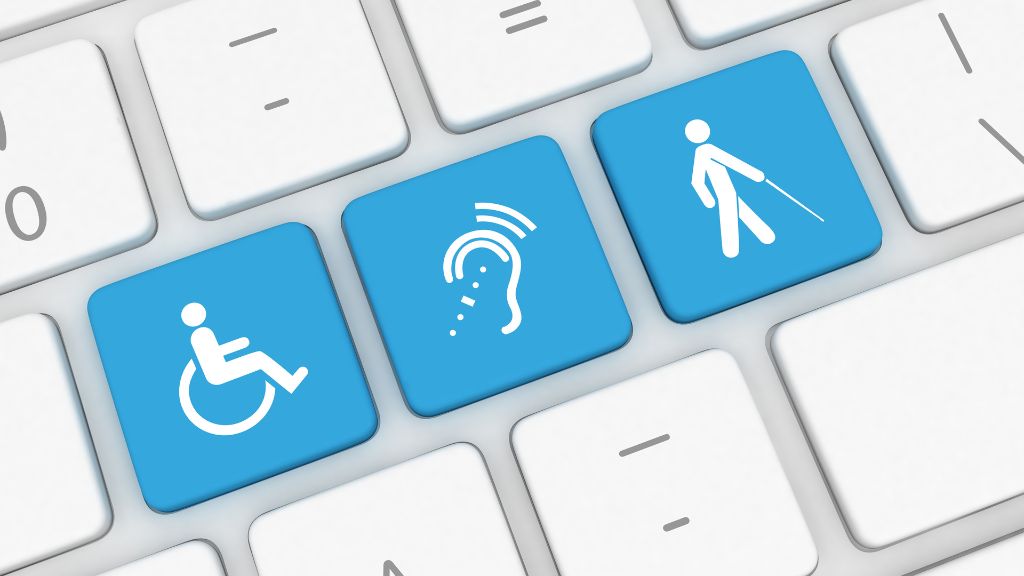Everything You Need to Know About Usability Testing in 2025
User experience can make or break your brand online.
It doesn’t matter which industry you’re in or the size of your business, if a user has a poor experience on your website, your competitors’ websites are their next stop.
You may spend months developing a website, but without a fresh set of eyes and some thorough testing, your site can easily fall short of expectations.
Usability testing has become non-negotiable in a world that’s dominated by the internet, which is why it should be a priority in 2025.
What Is Usability Testing?

Usability testing refers to the process of evaluating a website and the potential journey users would take from start to finish. It ensures that any customer can easily use a website regardless of their intentions or abilities.
Usability testing can also apply to products, but since the vast majority of businesses operate online, we will be focusing on website usability testing.
Testing needs to be conducted by people who weren’t involved in the development process, which inserts objectivity. The process takes multiple journeys into consideration, helping developers and website owners identify potential issues and barriers to full engagement.
Ideally, testing should be conducted from the early development stages right through to the release of the site and beyond.
Why Usability Testing Is Important
By bringing in new users to test your site, you are revealing potential issues that people who are familiar with your site are not able to identify.
Someone who is testing your site is using it for the first time, giving you insights into how a customer would engage for the first time too.
Usability testing matters because it reveals how a customer might get lost or confused. It also highlights whether every type of user would be able to complete primary actions on your site. And when we say every type of user, it includes users who may be living with disabilities.
Website accessibility is a hot topic and acts such as the Americans with Disabilities Act (ADA) and the Ontarians with Disabilities Act (AODA) are enforcing stricter regulations when it comes to usability. For this reason, accessibility should be a key consideration during the testing process.
It doesn’t matter whether you’ve designed a new site or implemented changes on an existing site, usability testing brings flaws to the forefront, ensuring a more seamless user experience and helping your business achieve critical goals.
3 Examples of Usability Testing
Usability testing is not the same as A/B testing where you want to discover which version of a page or site your customers would prefer.
It’s about making sure that regardless of your site’s purpose or how it looks, people are able to have a smooth experience throughout their online journey.
Let’s look at some examples.
Downloading a Document.
Let’s say you ran an ad that says customers need to complete a form to sign up for your services. However, when a customer reaches your site, you have a complicated menu structure and no clear way to find this form.
Usability testing would have someone click on your ad and navigate your site to determine how easily they could find and complete the form. And when we consider accessibility, this would also mean ensuring someone with a disability is able to use assistive technology to understand and successfully complete the form.
Completing a Purchase
For the next example, let’s assume you sell clothing. During a usability testing session, someone who hasn’t used your site before would browse your shop, add items to their cart, and complete a purchase.
Throughout this process, the tester would be looking at aspects such as how easy it was to find the right size shirt in a color they love, whether they were able to locate similar items, and if the payment process was easy, even for someone who isn’t an regular online shopper.
Reading a Blog
For the final example, let’s take a user who wants to educate themselves on a specific topic. The blog you have added to your site on this topic is lengthy and contains images as well as videos.
It should be said that the average online user has a limited attention span (1), so you need to consider how easy it is to read and enjoy your content. Is the text just a set of word-heavy paragraphs, or did you break them up using headers and bullet points?
And because some of your users might have a disability, it’s important to take into account the fact that they may need assistance understanding the text, images, and videos in your blog. Does the video have captions for users with potential hearing impairments? Is an elderly user able to enlarge the size of your text to make it easier to read? Do the images have alternative text that offers more context to someone with visual impairments or blindness?
These are all factors that impact the user experience.
Key Usability Testing Methods

Next, let’s look at some of the methods you might use during the usability testing process.
Usability tests tend to span three different categories:
Moderated vs Unmoderated.
This type of test can be performed in person or remotely. The key difference is whether the test is moderated or not. An example of this would be someone performing a test at home on their own versus in a lab where a moderator is present.
Moderated tests can produce better results because the moderator can guide the participant, ensuring you get all the data you need. However, these tests are usually more expensive to set up because they require a physical location, equipment for each tester, and the presence of a moderator.
An unmoderated test could be more ideal if you just want an answer to one specific question, which will require a tester to only perform one type of action. It also means the participant can perform the test anywhere using their own digital device.
Unmoderated usability testing is also often linked to guerilla testing, which means participants are chosen at random and won’t always have knowledge of or a history with the site or products and/or services.
Remote vs In-Person
As mentioned above, any usability test can either be performed in person or remotely, with or without a moderator.
The one benefit that in-person testing offers that remote testing doesn’t is that a moderator can also observe the facial expressions and body language of the participant. The only time this wouldn’t apply is if the interview or testing is conducted over the phone.
On the other hand, conducting remote user testing means you usually get to involve more participants because it’s more affordable and doesn’t require as much coordination and setup, potentially leaving you with more data.
There is also the option of recording remote sessions if you want to make sure you’re collecting as much data as possible. For example, you could track someone’s clicks as they move through your website by getting them to install software. This way, you’re not solely relying on someone’s personal feedback alone.
Exploratory Testing vs Assessment
The final category involves deciding whether you want to test a website as a whole or if you want to answer a specific query about a particular feature or action.
Exploratory testing means users would engage with a website in their own way and their usage stats would be recorded. Users would navigate a website without any specific guidance, providing general feedback on usability.
By taking an assessment approach, you would tell each user what you would like them to do on a website. This could be completing a form, watching a video, or making a purchase, helping developers identify where a site might not meet expectations for a particular task.
How to Conduct Usability Testing
Now that you have an idea of what usability testing is and the different methods available to you, let’s outline the general steps you would take during the process.
Decide What You Want to Test
Have you added any new features to your site that you want to review or do you want to get a general overview of the online user journey? Knowing what you want to test will help you formulate questions and tasks if need be.
Outline Success Criteria
How will you determine whether a usability testing session has been successful? What data do you hope to walk away with in order to make useful changes and updates?
Determine Testing Methods
Next, you want to decide which testing methods you want to use so that you can arrange the necessary facilities and technology. Will you require tracking software? Will you need to find a physical testing space and do you need to hire a moderator?
Delegate Roles
To successfully complete a usability testing session, you need to form a team, with everyone having a specific role. It doesn’t matter whether your tests are conducted remotely or in person, you will still need to delegate roles accordingly. It’s also important to make sure that these roles play to each person’s strengths. The average team might need someone to set up the test, a moderator, a data analyst, a project manager to provide relevant and actionable feedback to developers, and developers to action the changes.
Source Participants
Once you have a sound testing structure in place, you can start sourcing participants. It really helps to find testers who closely resemble your ideal customer for the most accurate results – creating personas makes this easier. You should ideally also find people who may not have used your site before.
Test Your Site
You now have everything in place to conduct your user testing. If you are conducting an in-person test, make sure that your participants are not given any guidance during the testing process. This will provide you with the most accurate feedback. If need be, you can also break the process up into smaller tests, asking for feedback after each session before testers move on to the next task.
Analyze Your Data
Once testing is complete, you will be left with a large amount of data that needs to be organized and analyzed. The analysis will uncover patterns and highlight issues on your website that need to be rectified. If you do use any type of software for testing purposes, make sure that you’re taking personal feedback from each user into account too.
Report Your Findings
Now that you’ve summarized your findings, you can provide your development and UX teams with feedback so that they can implement any changes.
It’s important to note that usability testing should be an ongoing function in your business. Any time your website undergoes major changes, testing should be conducted. Doing so will help you keep more customers satisfied more often and ensure you achieve your goals as a business.
Final Words
In the end, it doesn’t matter how good your products or services are. If your customers cannot interact with your brand in a fast, easy, and intuitive way, you’re going to lose out on potential sales and repeat business.
Working usability testing into your marketing and development processes will avoid lost time and sales purely because your website was difficult to use.
User testing also makes it that much easier to comply with accessibility laws and regulations, helping you avoid massive fines and unnecessary brand damage.
And even though, initially, testing takes up time and resources, in the long run, it leads to a more sound business strategy and increased longevity for your brand.
Usability Testing FAQs
Usability testing helps business owners and website developers better understand how real users interact with their websites. When a website or app is easier to navigate and engage with, users are more likely to make a purchase and become brand loyal.
Usability testing gathers valuable data that can improve the design and flow of a site or app. Even the best design and development teams rely on testing to improve their products.
Research by the Nielsen Norman Group suggests that you don’t need more than 5 test participants. This is particularly true if you don’t have an overly complex site. Consider the average website – most users will take more or less the same journey, which is why you don’t always need a large group for this process.
Ideally, usability testing should take place right from the start of the development process all the way through to the launch of the website. It should also take place whenever any major updates are implemented on a website to ensure a seamless experience.




